Barnacle Goose
- February 20, 2024
- 0 comment
The Barnacle Goose, scientifically known as Branta leucopsis, is a captivating waterfowl species found in various parts of the Northern Hemisphere. These medium-sized birds possess a striking appearance, characterized by their contrasting black and white plumage. They typically measure between 55 to 70 centimeters in length and weigh around 1.5 to 3 kilograms. One of the most remarkable aspects of Barnacle Geese is their impressive migration patterns.
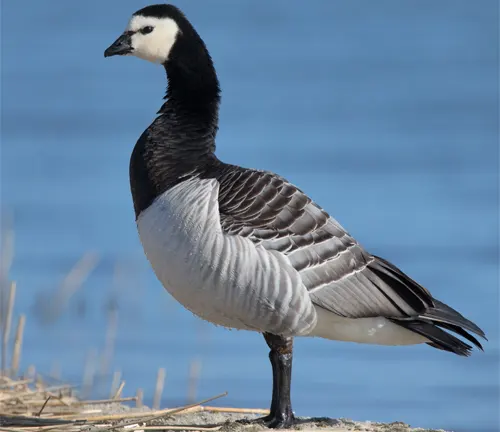
During the winter months, they embark on extensive journeys, traveling thousands of kilometers to reach their wintering grounds in northern Europe, particularly the British Isles and the Netherlands. Breeding predominantly in Arctic regions such as Greenland, Canada, and Siberia, Barnacle Geese exhibit fascinating nesting behaviors, often constructing their nests on cliffs or rocky outcrops inaccessible to most predators. Despite facing threats such as habitat loss and hunting, conservation efforts continue to play a crucial role in safeguarding these enigmatic birds for future generations to admire and study.
| Aspect | Description |
|---|---|
| Scientific Name | Branta leucopsis |
| Size | Medium-sized; typically 55-70 centimeters in length |
| Weight | Approximately 1.5 to 3 kilograms |
| Plumage | Black head, neck, and upper breast; white lower breast, belly, and flanks |
| Habitat | Breeds in Arctic regions such as Greenland, Canada, and Siberia; wintering grounds in northern Europe |
| Nesting Sites | Cliffs, rocky outcrops, often inaccessible to predators |
| Migration Patterns | Extensive migrations during winter months; travel thousands of kilometers to reach wintering grounds |
| Diet | Primarily herbivorous; feeds on grasses, sedges, agricultural crops |
| Conservation Status | Not considered endangered, but faces threats such as habitat loss and hunting |
| Cultural Significance | Featured in folklore, mythology, and cultural traditions |
Exploring the Enigmatic Waterfowl
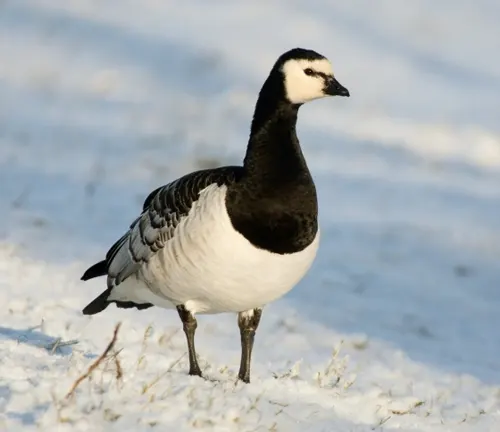
Barnacle Geese are fascinating creatures that inhabit various regions across the Northern Hemisphere. With their striking appearance and intriguing behaviors, these waterfowl have captured the attention of researchers, birdwatchers, and nature enthusiasts alike. In this article, we delve into the world of Barnacle Geese, exploring their physical characteristics, habitat, behavior, and interactions with humans.
Physical Characteristics
Size and Weight
The Barnacle Goose, scientifically known as Branta leucopsis, is a remarkable waterfowl species that captivates with its physical characteristics. In terms of size, these geese fall into the category of medium-sized birds, typically measuring between 55 to 70 centimeters in length. Their weight ranges approximately between 1.5 to 3 kilograms, making them relatively lightweight compared to some other waterfowl species. Despite their moderate size, Barnacle Geese possess a graceful and elegant appearance, which contributes to their allure in the avian world.
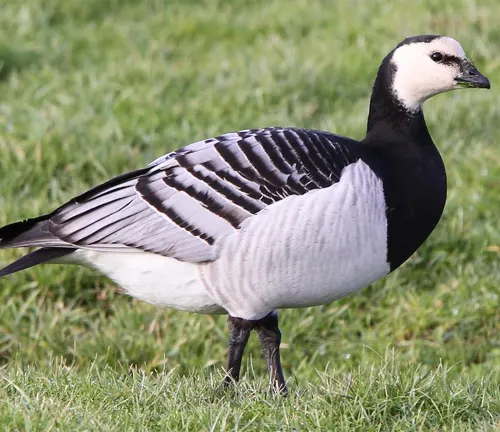

Plumage
One of the most striking features of the Barnacle Goose is its distinctive plumage. These birds exhibit a striking contrast in coloration, with a predominantly black head, neck, and upper breast, sharply juxtaposed against a white lower breast, belly, and flanks. This color pattern creates a visually stunning appearance that sets them apart from other waterfowl species. Additionally, their plumage may display subtle variations and nuances depending on the individual and the subspecies to which they belong. The combination of black and white plumage not only serves as a form of camouflage in their natural habitats but also adds to their aesthetic appeal, making them a delight to observe for birdwatchers and nature enthusiasts alike.
Habitat and Distribution
Breeding Grounds
The Barnacle Goose, selects its breeding grounds with precision, opting for remote and often inaccessible locations in Arctic regions. These breeding grounds include areas such as Greenland, Canada, and Siberia, where the geese find suitable habitats for nesting. What makes these breeding grounds particularly intriguing is the geese’s preference for cliffs or rocky outcrops as nesting sites. These elevated locations provide the geese with protection from ground predators, ensuring the safety of their nests and offspring. Despite the harsh environmental conditions of the Arctic, Barnacle Geese thrive in these regions during the breeding season, demonstrating their adaptability and resilience in extreme environments.
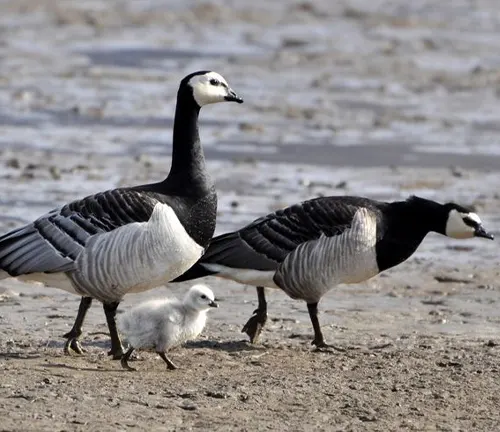
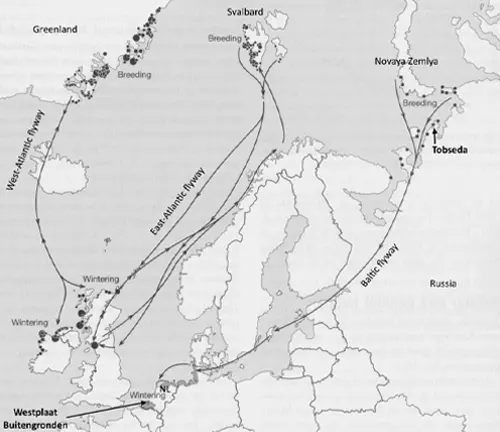
Migration Patterns
The migration patterns of the Barnacle Goose are nothing short of remarkable, encompassing extensive journeys spanning thousands of kilometers. As winter approaches, these geese embark on their migratory journey from their breeding grounds in the Arctic to their wintering grounds in northern Europe, particularly regions such as the British Isles and the Netherlands. The migration route often takes them across vast stretches of land and water, where they encounter various challenges and obstacles along the way. Despite the arduous nature of their journey, Barnacle Geese exhibit remarkable navigational skills, guided by instinct and environmental cues such as landmarks and celestial bodies.
Diet and Feeding Behavior
Barnacle Geese, exhibit fascinating dietary preferences and feeding behaviors that contribute to their survival and ecological role in their habitats.
Diet
Primarily herbivorous, Barnacle Geese have a diverse diet that primarily consists of grasses, sedges, and various agricultural crops. During the breeding season, they feed on a variety of plant matter found in their Arctic breeding grounds, including mosses and lichens. As they migrate to their wintering grounds in northern Europe, they adapt their diet to include agricultural crops such as wheat, barley, and other grains found in fields and coastal marshes. This dietary flexibility allows them to thrive in diverse environments and exploit available food resources throughout their annual cycle.
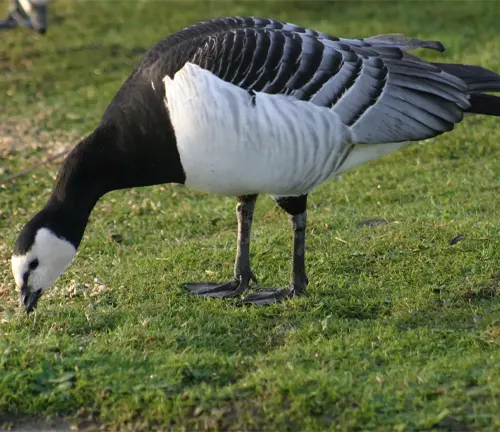
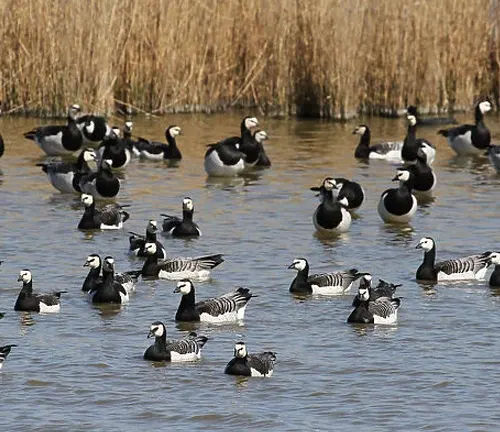
Feeding Behavior
Barnacle Geese are known for their grazing habits, which involve foraging for food in grasslands, marshes, and agricultural fields. They use their serrated bills to pluck vegetation from the ground or shallow water, often grazing in large flocks to maximize efficiency and safety from predators. Their feeding behavior is characterized by a delicate balance between energy acquisition and predator avoidance, as they remain vigilant for potential threats while actively searching for food.
During the breeding season, Barnacle Geese may also consume aquatic vegetation such as algae and aquatic plants, supplementing their diet with nutrients essential for breeding and raising their young. This dietary flexibility allows them to adapt to the changing availability of food resources throughout the year, ensuring their survival in dynamic and often challenging environments.
Reproduction and Nesting
Mating Rituals
The mating rituals of Barnacle Geese, are characterized by elaborate displays and behaviors aimed at courtship and pair bonding. During the breeding season, typically in the spring and summer months, male Barnacle Geese engage in impressive displays to attract potential mates. These displays often involve vocalizations, head bobbing, and synchronized movements, which serve to communicate strength, vitality, and suitability as a mate.

Once a pair forms, they engage in courtship rituals that strengthen their bond and prepare them for the nesting season. This includes preening each other’s feathers, engaging in mutual grooming, and engaging in synchronized movements. These behaviors not only strengthen the pair bond but also serve as a form of communication and reinforcement of their commitment to each other.
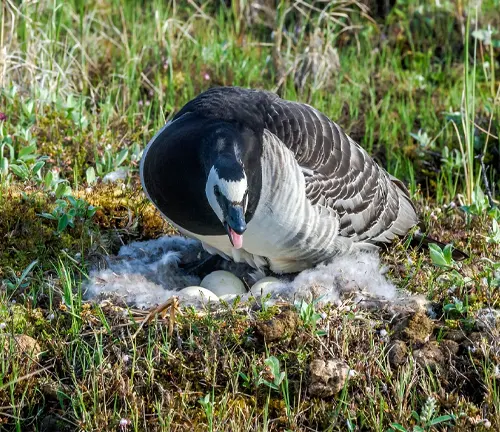
Nesting Sites
Barnacle Geese are selective in choosing their nesting sites, opting for locations that provide safety and security for their offspring. They often select remote and elevated sites, such as cliffs, rocky outcrops, or small islands, which are inaccessible to most ground predators. These elevated nesting sites offer protection from predators such as Arctic foxes, polar bears, and predatory birds, reducing the risk of nest predation and increasing the chances of successful breeding.
The female Barnacle Goose constructs the nest using a combination of plant material, twigs, and down feathers, creating a shallow depression where she lays her eggs. The male assists in gathering nesting materials and defending the nesting territory from potential threats. Once the nest is complete, the female lays a clutch of eggs, typically ranging from 3 to 6 eggs, which she incubates for approximately 25 to 28 days until they hatch.
Predators and Threats
Natural Predators
Despite their adaptability and resilience, Barnacle Geese, face predation from various natural predators, particularly during the breeding season. In their Arctic breeding grounds, potential predators include Arctic foxes, polar bears, and predatory birds such as gulls and skuas. These predators pose a threat to both adult geese and their offspring, preying on eggs, chicks, and vulnerable adults. Arctic foxes, in particular, are known to target Barnacle Goose nests, scavenging eggs and young chicks as a crucial food source during the breeding season.
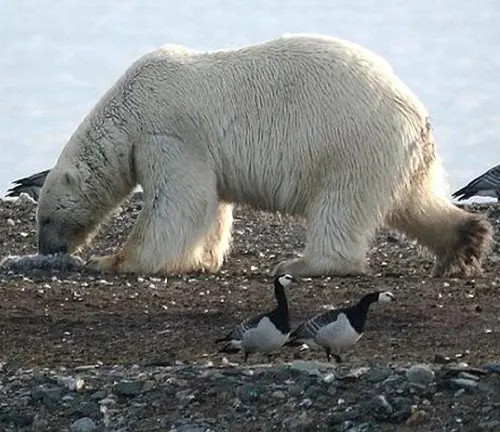
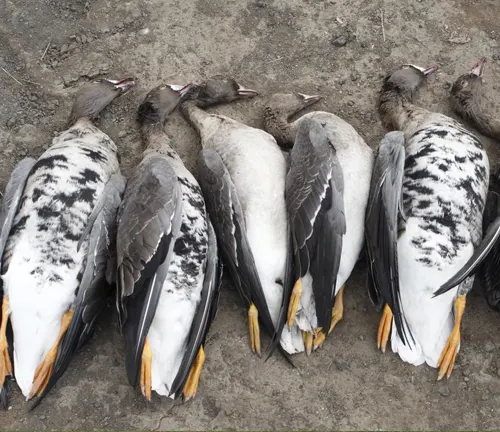
Human-Induced Threats
In addition to natural predators, Barnacle Geese also face a range of human-induced threats that impact their populations and habitats. Habitat loss and degradation due to agricultural expansion, urban development, and industrial activities pose significant challenges to Barnacle Geese populations, particularly during migration and wintering periods. Loss of crucial feeding and nesting habitats reduces the availability of food resources and suitable breeding sites, limiting the reproductive success and overall survival of these waterfowl.
Conservation Efforts
Barnacle Geese (Branta leucopsis) are iconic waterfowl species that inhabit Arctic and sub-Arctic regions, captivating with their striking plumage and remarkable migratory behavior. However, like many other wildlife species, Barnacle Geese face various threats to their survival, including habitat loss, hunting pressure, and pollution. To address these challenges and ensure the long-term viability of Barnacle Goose populations, concerted conservation efforts are essential.
Habitat Preservation
One of the primary conservation strategies for Barnacle Geese involves the preservation and restoration of critical habitat areas. This includes protecting breeding grounds in Arctic regions, as well as important stopover sites and wintering grounds along their migratory routes. Conservation organizations work with governments, landowners, and local communities to establish protected areas, such as wildlife reserves and national parks, where Barnacle Geese can thrive free from disturbance and habitat degradation.

Monitoring and Research
Effective conservation of Barnacle Geese relies on a solid foundation of scientific research and monitoring programs. Researchers study various aspects of Barnacle Goose ecology, behavior, and population dynamics to better understand their needs and vulnerabilities. This information is used to develop evidence-based conservation strategies and management plans aimed at mitigating threats and ensuring the sustainability of Barnacle Goose populations.
Regulation of Hunting
Hunting regulations play a crucial role in the conservation of Barnacle Geese, particularly in regions where hunting is permitted. Conservation organizations work with governments and local communities to establish sustainable hunting practices and enforce regulations to prevent overexploitation of goose populations. This may include setting quotas, regulating hunting seasons, and implementing measures to protect nesting and roosting sites from disturbance.
Public Awareness and Education
Raising public awareness about the importance of Barnacle Geese and the threats they face is essential for garnering support for conservation efforts. Conservation organizations, educational institutions, and government agencies engage in outreach and education initiatives to inform the public about the ecological significance of Barnacle Geese and the need for their protection. This may include educational campaigns, workshops, and outreach events aimed at fostering appreciation and stewardship of these iconic waterfowl.
Interesting Facts
- Barnacle Geese can fly at altitudes of up to 8,000 meters during migration.
- Their distinctive call resembles a loud, honking sound, often heard during flight or while foraging.
- Some populations of Barnacle Geese have adapted to urban environments, nesting on buildings and bridges in cities.
Different Species
Brent Goose
(Branta bernicla)
The Brent Goose is a small goose species that breeds in Arctic regions and migrates southward to wintering grounds in coastal areas of Europe, Asia, and North America. It shares some similarities in appearance with the Barnacle Goose, including dark plumage with white markings.
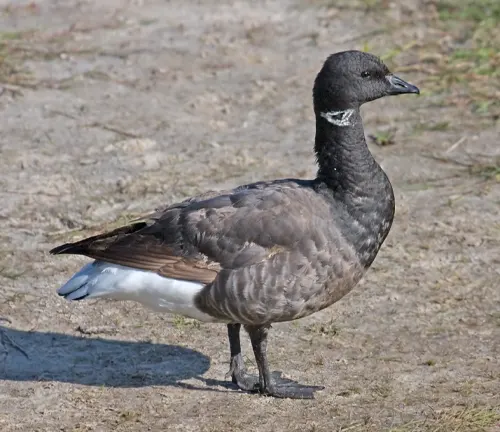
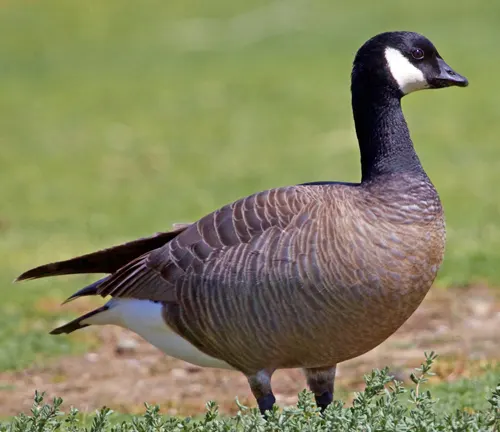
Cackling Goose
(Branta hutchinsii)
The Cackling Goose is a smaller subspecies of the Canada Goose, known for its compact size and distinctive calls. While not typically referred to as a “barnacle goose,” it may sometimes be mentioned in the context of similar habitat preferences or behavior.
Barnacle Goose
(Branta hrota)
Another species known as the Barnacle Goose (Branta hrota) is found in the British Isles and parts of northern Europe. It has a similar appearance to the Branta leucopsis species but is smaller in size and has a more restricted range.

Frequently Asked Questions (FAQs)
- What is a Barnacle Goose?
A Barnacle Goose (Branta leucopsis) is a species of waterfowl belonging to the family Anatidae. It is known for its striking black and white plumage and remarkable migratory behavior. - Where are Barnacle Geese found?
Barnacle Geese are primarily found in Arctic and sub-Arctic regions during the breeding season. They migrate southward to wintering grounds in northern Europe, particularly the British Isles and the Netherlands. - What do Barnacle Geese eat?
Barnacle Geese are primarily herbivorous and feed on a variety of grasses, sedges, and agricultural crops such as wheat and barley. They also consume aquatic vegetation during the breeding season. - How do Barnacle Geese migrate?
Barnacle Geese undertake remarkable migrations, traveling thousands of kilometers between their breeding and wintering grounds. They navigate using a combination of celestial cues, landmarks, and innate instincts. - How long do Barnacle Geese live?
Barnacle Geese have a lifespan of around 10 to 20 years in the wild, although some individuals may live longer in captivity. - Do Barnacle Geese mate for life?
Yes, Barnacle Geese are known to form monogamous pairs and often mate for life. They engage in elaborate courtship displays to reinforce their pair bond. - How many eggs do Barnacle Geese lay?
Barnacle Geese typically lay a clutch of 3 to 6 eggs, although clutch size may vary depending on factors such as habitat quality and environmental conditions. - What are the predators of Barnacle Geese?
Predators of Barnacle Geese include Arctic foxes, polar bears, large birds of prey, and occasionally mammals such as wolves and bears. - Are Barnacle Geese endangered?
Barnacle Geese are not considered endangered. However, certain populations may face threats due to habitat loss, hunting, and other human-induced factors. - How do Barnacle Geese communicate?
Barnacle Geese communicate through a variety of vocalizations, including honking calls, alarm calls, and contact calls. They also use body language and displays to communicate with other geese. - Do Barnacle Geese have any unique behaviors?
Barnacle Geese are known for their synchronized flight formations and elaborate courtship displays. They also exhibit strong social bonds within flocks and family groups. - How do Barnacle Geese defend themselves from predators?
Barnacle Geese defend themselves from predators by staying vigilant and alert, flocking together for safety, and seeking refuge in inaccessible nesting sites. - What is the conservation status of Barnacle Geese?
Barnacle Geese are classified as a species of “Least Concern” by the International Union for Conservation of Nature (IUCN). However, certain populations may be at risk due to habitat loss and hunting pressure. - Do Barnacle Geese have any cultural significance?
Barnacle Geese have cultural significance in various regions, featuring prominently in folklore, mythology, and cultural traditions, particularly in Europe. - Can Barnacle Geese adapt to urban environments?
Yes, Barnacle Geese have shown the ability to adapt to urban environments, nesting on buildings, bridges, and other man-made structures in cities. However, their adaptability may also bring them into conflict with humans in some cases.


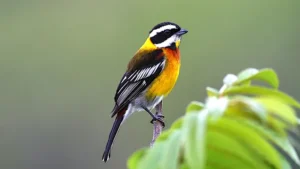


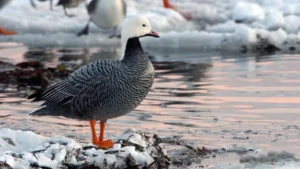


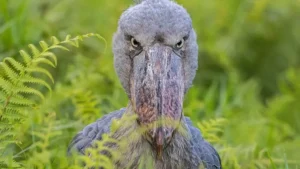
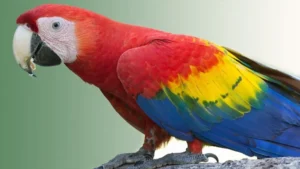
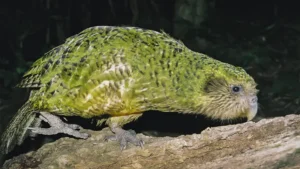
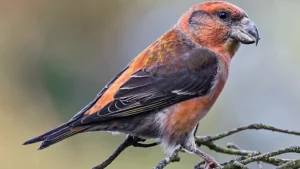
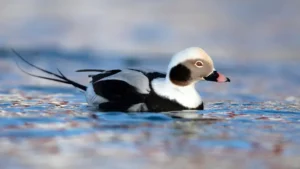
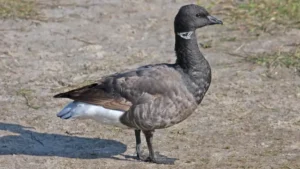
Leave your comment